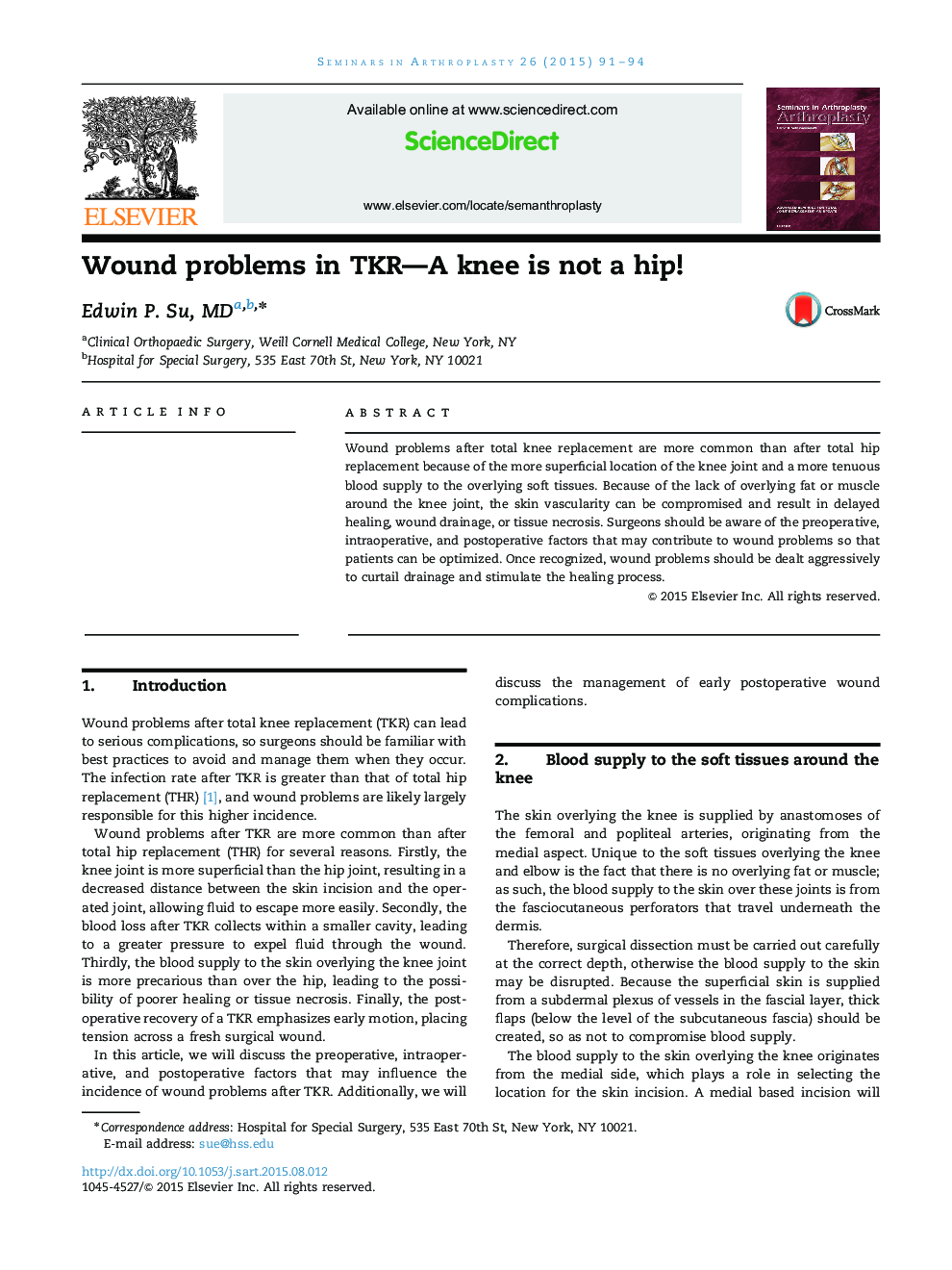| Article ID | Journal | Published Year | Pages | File Type |
|---|---|---|---|---|
| 4093831 | Seminars in Arthroplasty | 2015 | 4 Pages |
Abstract
Wound problems after total knee replacement are more common than after total hip replacement because of the more superficial location of the knee joint and a more tenuous blood supply to the overlying soft tissues. Because of the lack of overlying fat or muscle around the knee joint, the skin vascularity can be compromised and result in delayed healing, wound drainage, or tissue necrosis. Surgeons should be aware of the preoperative, intraoperative, and postoperative factors that may contribute to wound problems so that patients can be optimized. Once recognized, wound problems should be dealt aggressively to curtail drainage and stimulate the healing process.
Related Topics
Health Sciences
Medicine and Dentistry
Orthopedics, Sports Medicine and Rehabilitation
Authors
Edwin P. Su,
